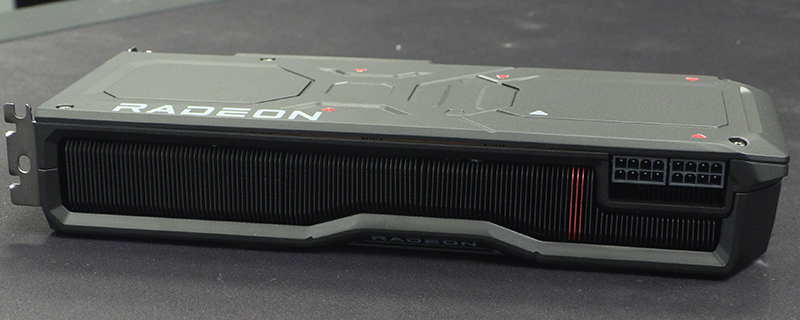AMD Radeon RX 7800 XT Review
Conclusion
The RX 6800, a card we know a lot of people have brought despite it being a generation older, currently retails around the £550 mark depending upon vendor, which makes the RX 7800 XT with its £479.99 price point a total bargain. As you could see from our results the RX 7800 XT often bests the RX 6800 XT, and is usually better than the other key player in this segment of the market, the £600 Nvidia RTX 4070. Straight away that makes this an easy sell.
Whenever we get a new graphics card for review we always get press materials that demonstrate how it compares to its rivals, and without fail the manufacturer always picks a very old card as the comparison. This is largely a tacit acknowledgement that graphics cards are expensive enough that most of us skip a generation. In this particular instance AMD put the RX 7800 XT against their 5000 series of cards, which it comfortably bested. We think our results, where it is against the sterner demands of the 6000 series and some of the highest selling Nvidia options, is a much closer evaluation of the real world choices potential purchasers are having to make. In this regard it’s almost a no-brainer decision. With a couple of caveats.
The most obvious caveat is that these cards are not built for 4K gaming, but anyone who thinks you’ll be able to game smoothly at 4K60 with a sub-£500 card is living in a dreamland. Secondly, and this is where our introductory entreaty to be honest with yourself and your needs comes into play, AMD are still a fair way behind Nvidia when it comes to ray tracing results. The 7000 series are much better than their first efforts, but even the majority of current Nvidia cards are left sweating beneath the demands of ray traced games. It’s still in the ‘nice to have, but not a game-changer’ place that you find all early-generations of a new technology to be. That isn’t to say that the RX 7800 XT can’t do it. Control, for example, at 1080 is way beyond 60 FPS average, and even at 1440 we see numbers around 50 FPS with ray tracing turned on.
Whilst those two might sound somewhat negative, the star of the show is unquestionably AMDs FidelityFX Super Resolution technology. In every supported game, without exception, the gains found by turning it on were enormous. Call of Duty, for example, where frames are the cornerstone to high skill play, gained 70 FPS average at 1080 and 60 FPS in 1440, above an already impressive ‘vanilla’ number. It’s a real feather in the AMD cap.
All of which means that if you’re a gamer understanding the cost of the premium cards and what you should be able to attain for your £479.99 outlay, the RX 7800 XT is a stone-cold success. It’s aimed at 1080 and 1440 gamers, and designed to bring high FPS gaming in all the latest titles, and that’s something it does with aplomb, comfortably beating out the competition in this sector of the market, and wins our OC3D Gamers Choice Award. We would recommend checking out our RX 7700 XT review before laying down the cash though, especially if funds are super tight.
Discuss the AMD Radeon RX 7800 XT on the OC3D Forums.




